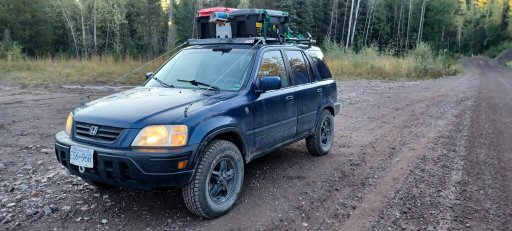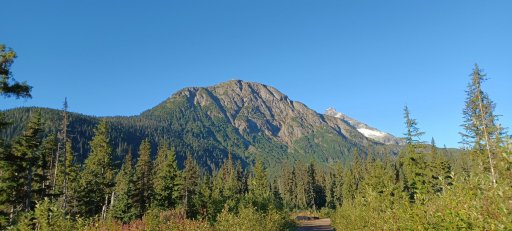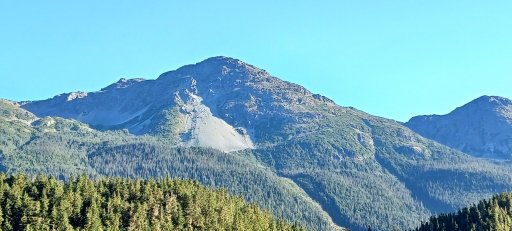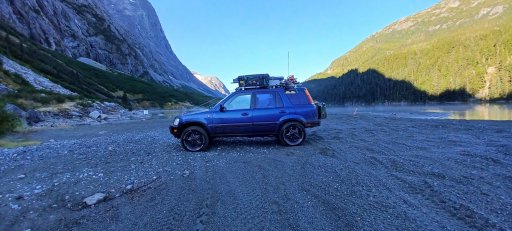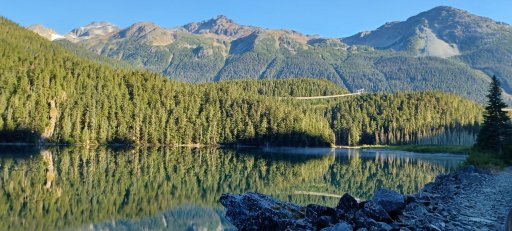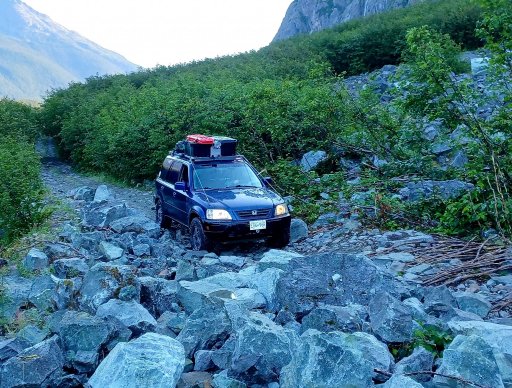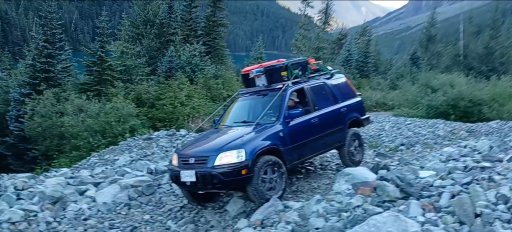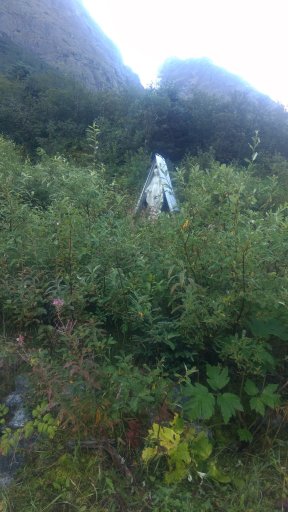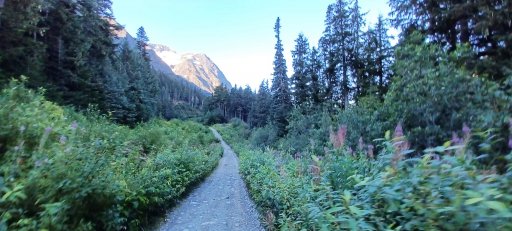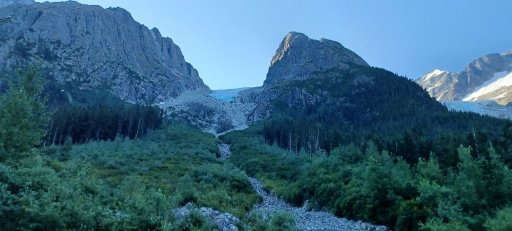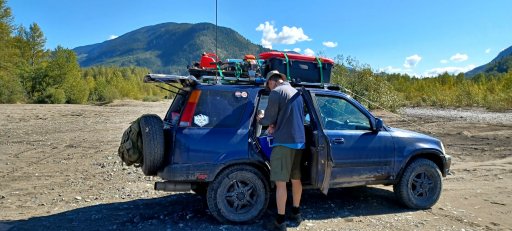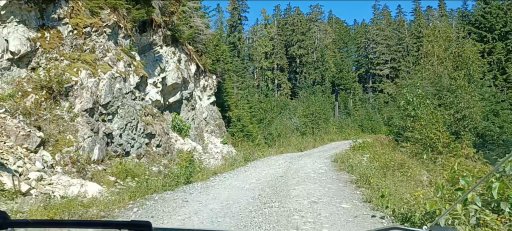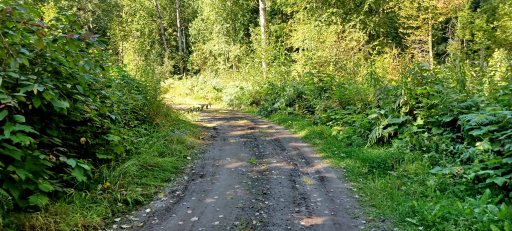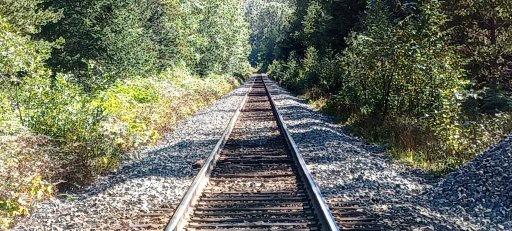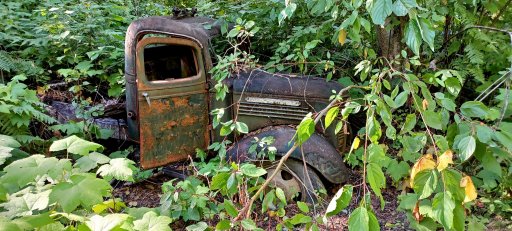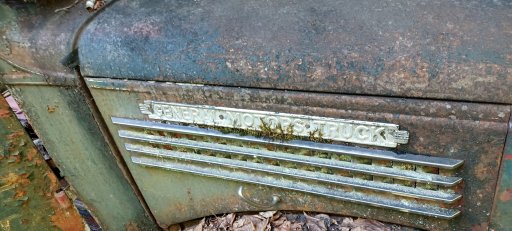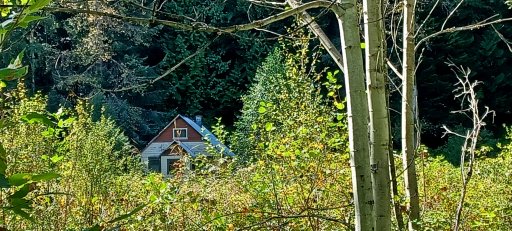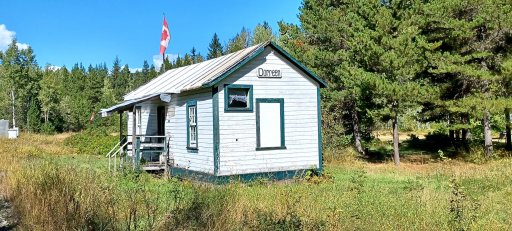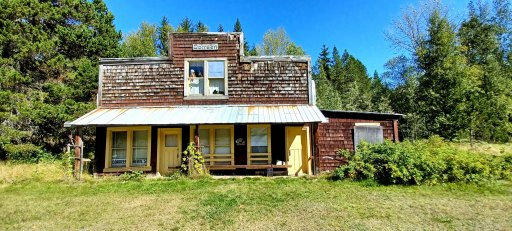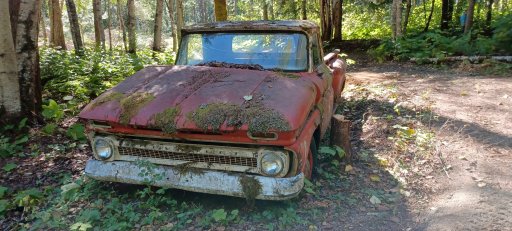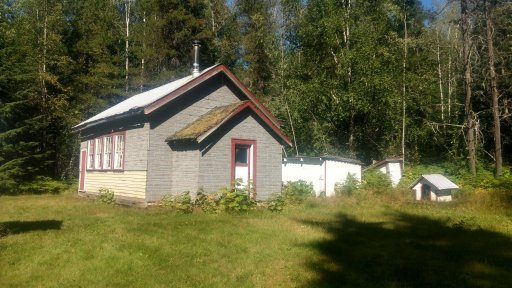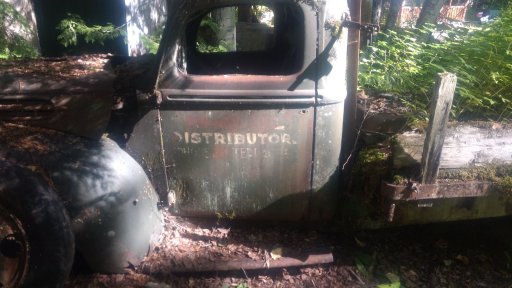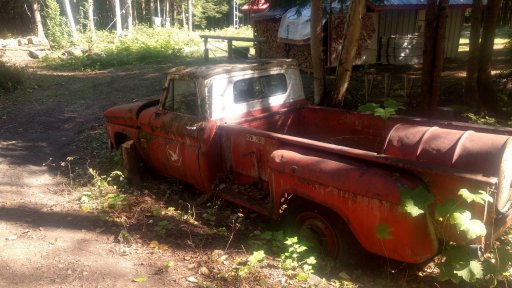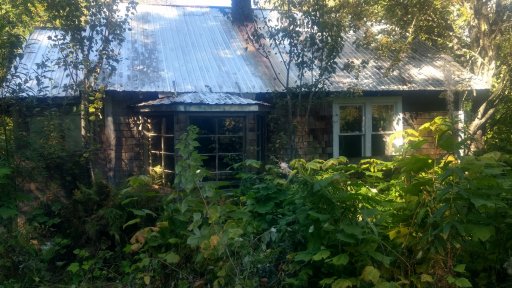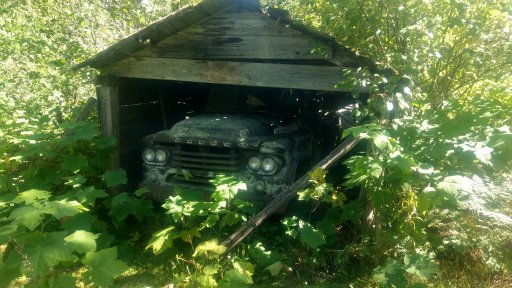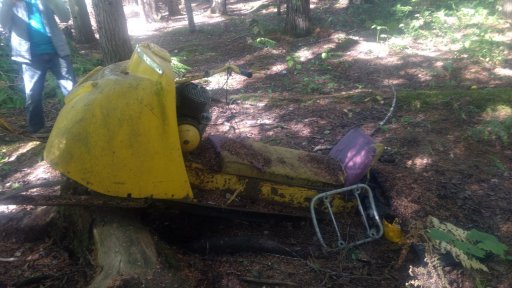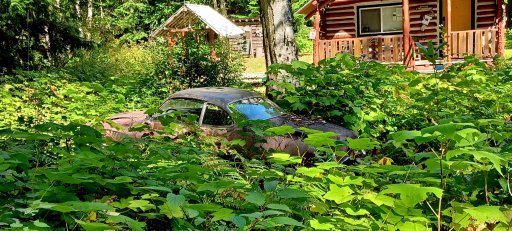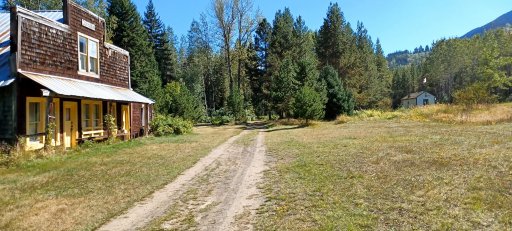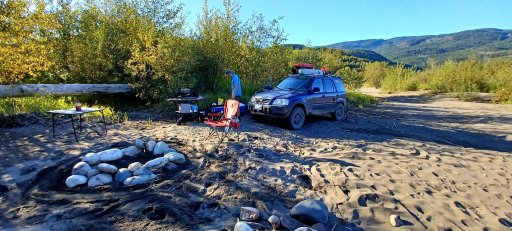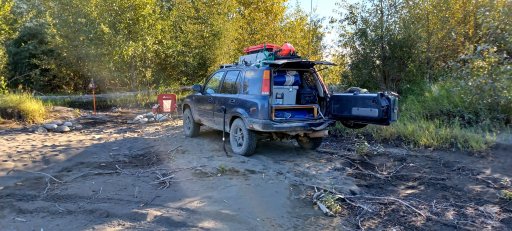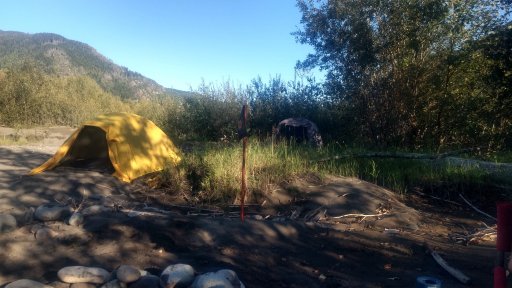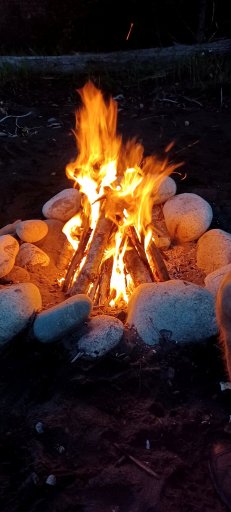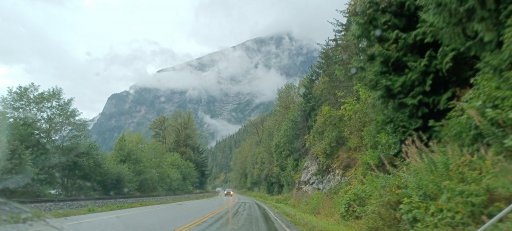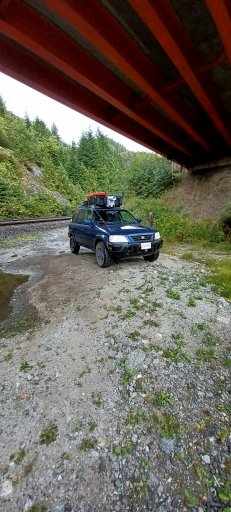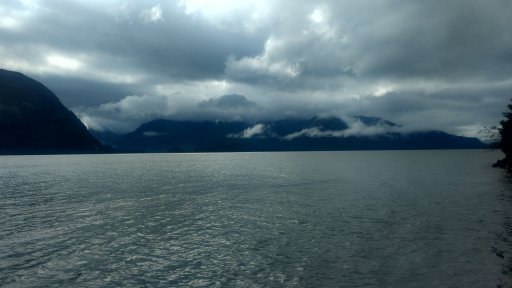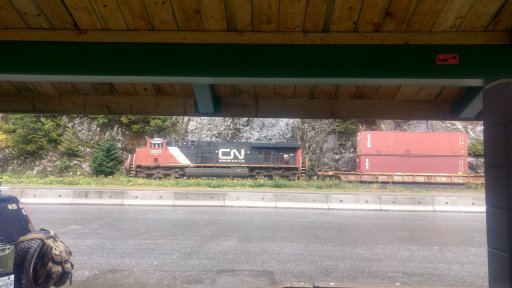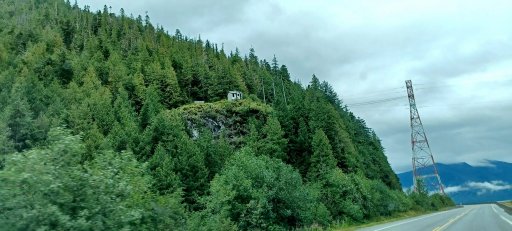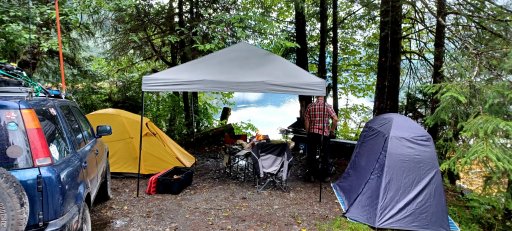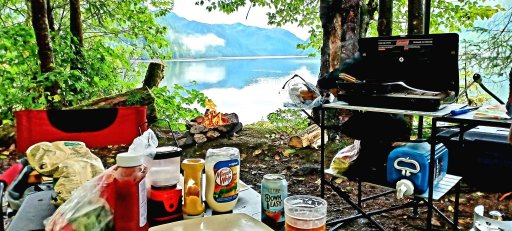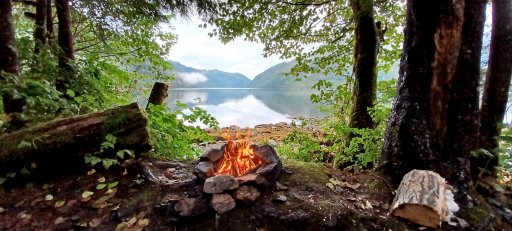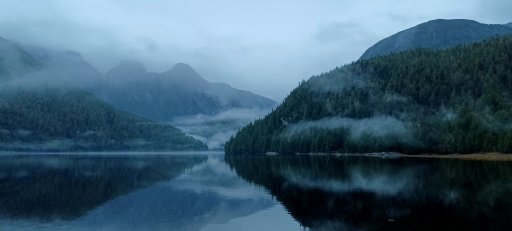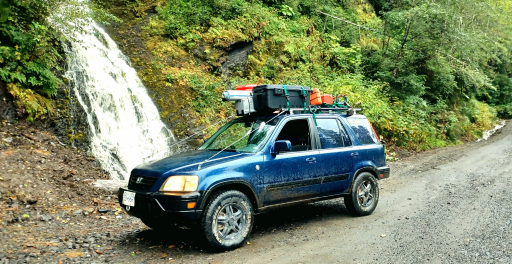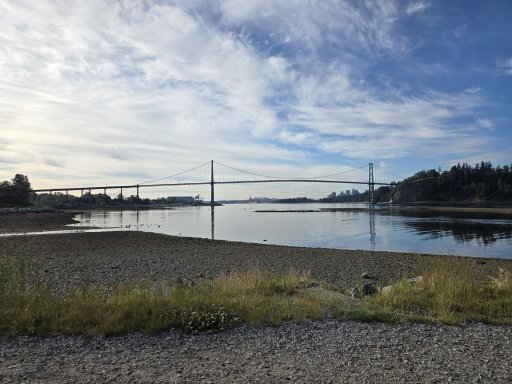Day 2 would prove to be the most challenging day of the expedition, and one fraught with disappointments and frustrations, but which, nevertheless, still proved memorable and enjoyable despite the setbacks involved.
We awoke to a somewhat drizzly, overcast day, which remained thus despite some valiant effort on the part of the sun to make an appearance. We began with a hearty breakfast of bacon, eggs and of course, coffee.
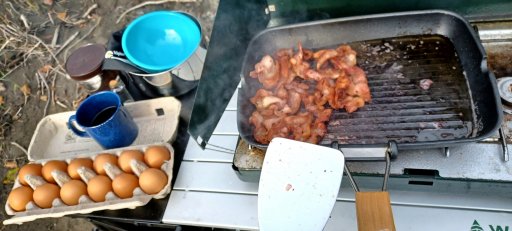
Our first move of the day was to drive south into Kitimat to check out the wreck of the "First Try," a concrete hulled vessel out of Prince Rupert which I believe was likely a sailing ship of some sort, probably used in fishing. Someone better versed in the finer details of ships could comment on this. I always found the name of the ship ironic and amusing, given how it ended up - got it up the beach on the first try, apparently!
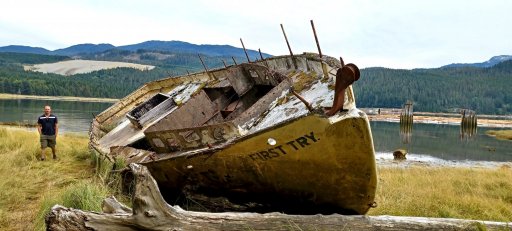
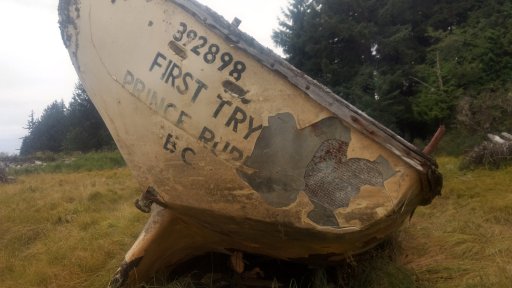
I have a book entitled Shipwrecks of British Columbia Vol 2. I checked it to see if I could find out more about the history of the First Try, but alas it wasn't in there. Perhaps in volume 1? Subsequent internet searches likewise turned up nothing. Before this trip I had not had a chance to see the wreck up close, and I was surprised to find that the hull was made of concrete. This suggests to me the reason why it was never salvaged - too dang heavy!
We also made an attempt to reach a much larger shipwreck further down the coast from here, what I found out later was the MS Redonda. Unfortunately, the weather turned somewhat nastier and there was no easy way to reach it on foot along the beach, the way being blocked by a deep creek spanned by sketchy, slippery logs. Our attempts to reach it in the vehicle were likewise thwarted by several of the possible tracks to it being blocked by industry installed gates, despite driving down a couple of extremely narrow, rutted, muddy tracks which were rather fun at least. It really would have been nice to visit the Redonda as well, but unfortunately we had to move on.
We returned to the vehicle to find a hitchhiker had decided to hop aboard.
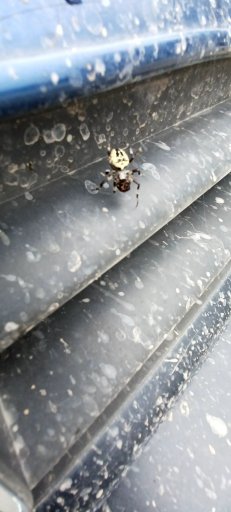
We felt he might not survive the adventure, so we set him free on a nearby rock.
Our next stop was on the far side of the harbour from Minette Bay, to North Cove Trail. After a brief pit stop at Hospital Beach Park, which offers a nice view of the port, but not much else due to the beach being closed, we moved on along the winding road toward North Cove. The trail winds its way down through towering cedar forest toward a small natural cove south of the port. The views are magnificent, and the coastal rainforest strongly reminded me of North Vancouver, BC where I grew up, so the hike took on a nostalgic feel.
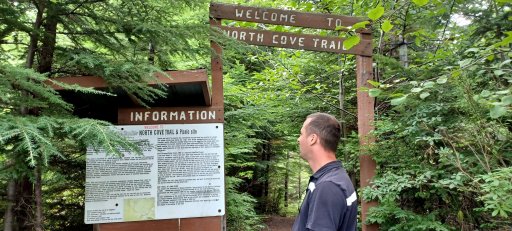
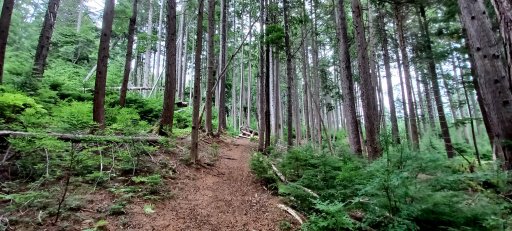
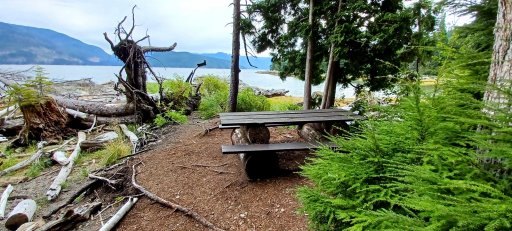
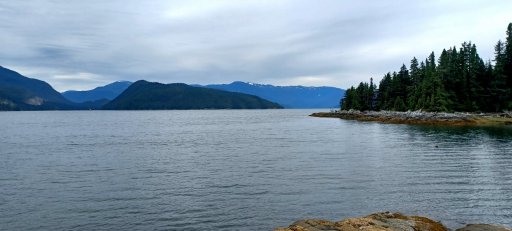
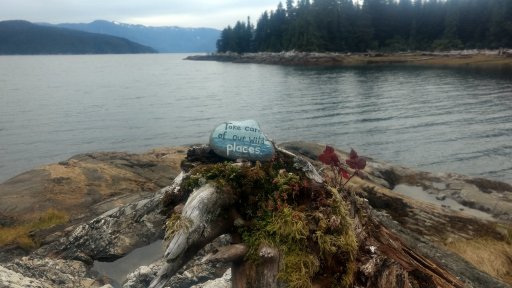
Lunch consisted of meat and cheese wraps while seated on a rock overlooking the peaceful cove. From here, we could just see the mouth of Kildala Arm, which would be our next target, visible in the right hand side of the second to last of the picture series above. This leg of the journey, unfortunately, was to prove the most disappointing and frustrating of the trip, and one which still bothers me to this day.
We set out, driving back around the harbour toward the native village south of Minette Bay. An inconspicuous road out of the back of Haisla Village leads up into the mountains toward our goal. We had some fun navigating the overgrown, narrow, decomissioned FSR into the deep bush. It looked as if nobody had come along this way in many a long year, and we were soon to find out why.
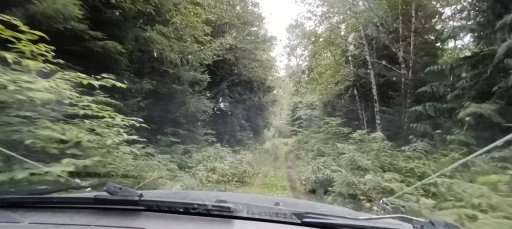
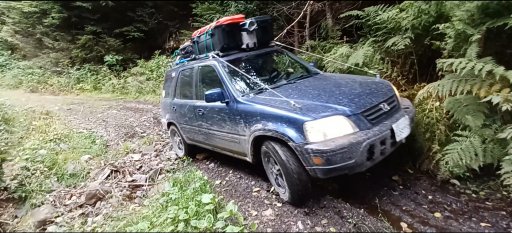
I had done map recce of this area on several sites including ArcGis, ZoomEarth (now defunct, unfortunately) and google maps, and all of them showed the road continuing all the way to the coast. Ironically, only Overland Bound's map accurately showed that the bridge over the creek several kms in was obliterated, but sadly I did not check OB's map in close detail until after the trip. We found ourselves at the end of the road where a huge concrete footing for the bridge that once stood there dropped off into the rushing creek below.
Never one to give up easily, I parked and got out, and after hunting around for a bit, found a little side track that seemed to have been created to bypass the bridge, leading down to the water. I walked down this track slowly and carefully, examining the terrain with a very tenuous "maybe" in my mind as to the possibility of driving it in the CR-V. Upon reaching the bottom, I found the water wasn't too terribly deep, and with some rock shifting we might reasonably have a chance of driving across it, despite some rather large boulders that would have to be avoided, but when I looked across the creek to the far side, my heart sank.
The "exit" from this bypass was a huge, slick, mossy, almost vertical rock face probably 10 to 15 feet high, leading up into a gap in the trees. Tantalizingly, almost as if to taunt me, I felt certain I saw faint tire tracks in the grass at the top of this near-cliff, as if someone had indeed driven it in some kind of vehicle.
I stood there for quite a while considering what to do. Was it possible to get across? Yes, I decided, it was, although it was very risky, a move made even riskier by the fact we were solo. I had a winch, and I reasoned that I could almost certainly get to the base of the rock and make a winch assisted drive to the top, but that was where the real problem began - suppose we did manage to get to the top...what would we find further down the road? Could there be an even more impassable obstacle further down that would stop us cold? And even if we made it to Kildala arm, the ultimate question remained - how on earth would we safely come back down this slick rock? The attempt could take a few hours even if everything went smoothly, and the results could spell disaster if anything went pear shaped. All things considered, I decide to turn around rather than risk it. It was a tough call, but in the end, I still believe it was the wisest.
We turned around and headed back the way we came to hunt up another camp spot.
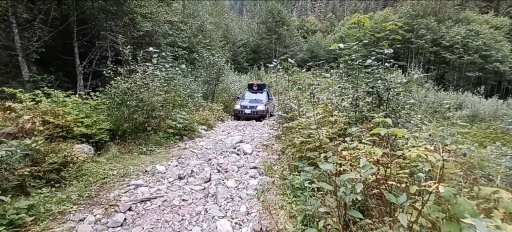
We drove back to near the start of the track and took a different fork than the first one, hoping to make our way to a ridge overlooking the bay. We spent some time wandering around the maze like network of forestry tracks that weave their way through this mountainous forest, including a couple somewhat sketchy ones.
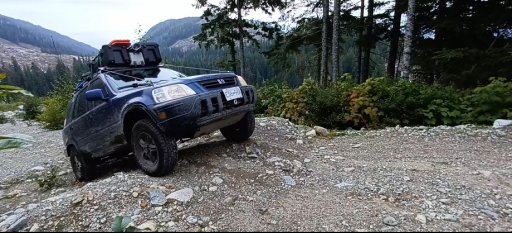
It was then that we ran into our second frustration, a locked gate blocking us from accessing the area we wanted to camp in. We hunted for a bypass, but alas there was no reasonable way around, as the gate was right at the start of a bridge over a deep ravine with a creek at the bottom. We shifted to plan C and hunted around the tracks we could access, finally arriving at an okay camp spot that had a decent view at the end of a forestry track that was covered with debris from the logging that had happened there. By this time the weather had turned rainy, so we ended up nicknaming our camp spot "Water Logged." Nevertheless, we built a roaring fire and had Irish Stew for dinner to start out what was to be a fairly pleasant evening all things considered.
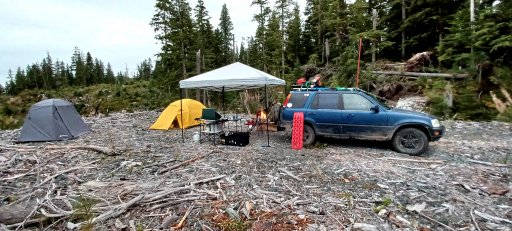
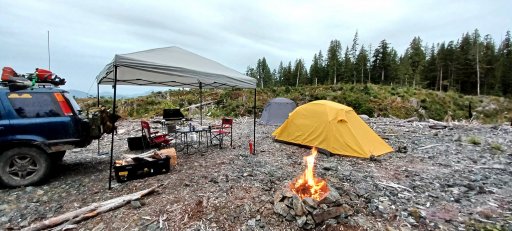
The following map shows the area, with the approximate route of the decomissioned FSR, the point where the bridge was out, the locked gate, and our eventual camp spot. To this day, I still wish to somehow, some day, whether on foot or by vehicle, camp on the shores of Kildala Arm, having successfully navigated this old road.
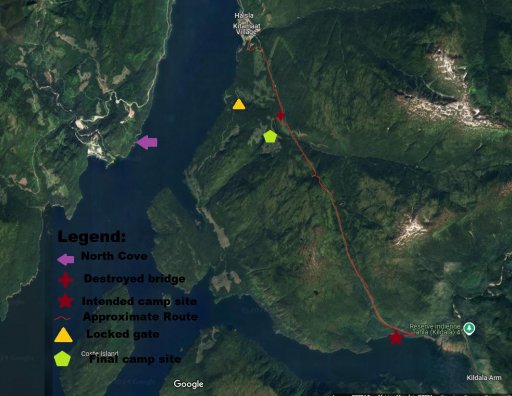
Just before bed, we heard what I figured was a bear roaring or bellowing or possibly a moose. It was then that I was reminded I had forgotten to bring my 12 gauge shotgun. I was comforted by the thought that I had been extremely careful about smells, however, and had left the LED lantern lit on the table over night.
More to follow!


